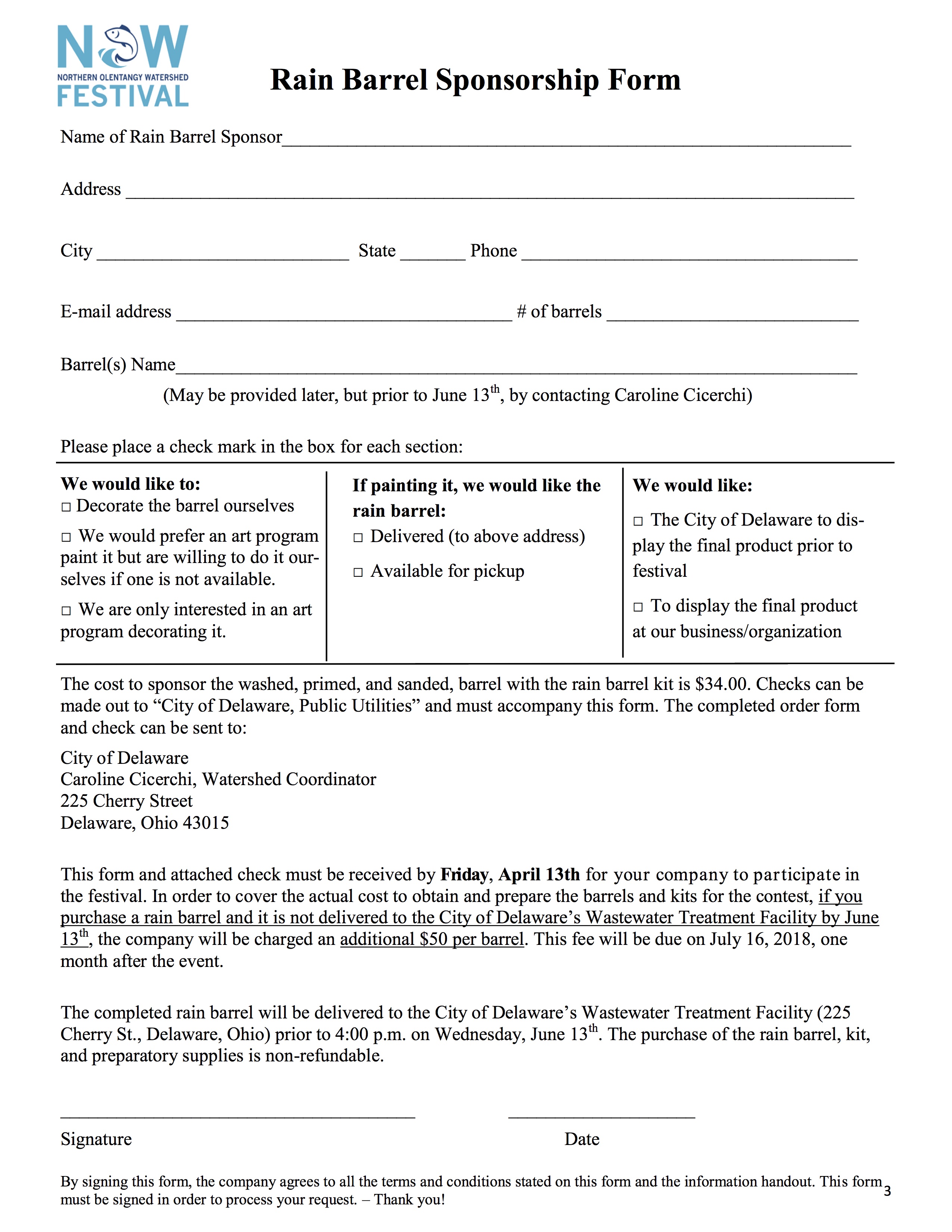Semester projects for GEOG 369 Remote Sensing (Rowley) & ENVS 399 Sustainability Practicum (Krygier). OWU Science Center Atrium, Tuesday May 2, 2023.
ENVS 399 info: GEOG 369 Remote Sensing
Semester projects for GEOG 369 Remote Sensing (Rowley) & ENVS 399 Sustainability Practicum (Krygier). OWU Science Center Atrium, Tuesday May 2, 2023.
ENVS 399 info: GEOG 369 Remote Sensing
OWU Connection Experience: Mapping the impact of road salt on local freshwater ecosystems in Delaware County using ArcGIS, a type of online geographic information system software
Rancher has been working on an independent study project under the direction of Amy Downing, Ph.D., professor of Biological Sciences, with support from Nathan Rowley, Ph.D., associate professor of Environment and Sustainability, and John Krygier, Ph.D., professor of Environment and Sustainability and director of Environmental Studies.
The project is an expansion of research Downing conducted with scientists across North America and Europe to show the damage being done to freshwater lakes by salt concentrations that fall below the ranges government regulators have deemed safe for freshwater organisms.
“In this project,” Rancher said of his independent study, “we conducted an analysis to predict which ponds in Delaware County are most vulnerable to (road) salt exposure based on factors such as pond size, watershed size, distance from impervious surfaces, amount of impervious surfaces, and the amount of salt applied near a pond.”
“We connected with city and county departments to access data files such as digital elevation models (DEM), street centerlines, and aerial imagery, as well as to develop an understanding of how much salt is applied to which roads. At this point in time, we have been able to successfully apply this model to about five individual ponds, but the goal is to increase this amount to around 20 or more ponds and then go out and sample these ponds for chloride concentrations to compare to our predictions.
“The goal is to find a way to automate our analytical process in ArcGIS to allow us to develop a salt vulnerability assessment for all ponds in Delaware County and create a well-rounded map of the landscape. In theory, this might look something like a heat map where we score ponds based on our predictions for their vulnerability to salinization.
“For example, a pond with a high vulnerability might be scored a 10, correlated with dark red, and a low vulnerability pond might be a 1, associated with tan or yellow. In the end, our map may look different than this because we are dealing with hundreds of ponds and various factors that could sway a pond’s vulnerability to salt even to a degree. Therefore, this is something we must keep in mind in order to accurately represent and map our results.
“The intention would be to make the map accessible to the University and to the public through Arc Online once it is finalized.”
“Fall semester was very pivotal for me because I have gained confidence with ArcGIS and the research process, which I know will be very applicable in my graduate studies.
“There is always something that you are learning in the classroom that can have a real-world application, so I always try to approach a new class with this mindset and get something out of the experience.
“Moreover, independent research, whether it is by yourself and a professor or with a few peers and a professor, is a very genuine opportunity to develop hands-on skills and new interests/passions that you could then convert into your focus in graduate studies or even a career.”
“My favorite moment throughout this experience was witnessing first-hand how receptive individuals of city and county departments were and seeing their willingness to help me find the information I needed and well wishes for the project. This is very meaningful because you can tell they care about who we are as students and what we have to offer, and they are not here to act as a barrier but to help you break down barriers and learn as much as possible.
“There is a lot that could come out of continued connections between OWU and people who work for Delaware City and County departments, and a lot of good is to come with a greater connection with the Delaware community.”
Rancher and Downing have drafted a first article outlining the project, “Developing a predictive model for pond salinization using readily available geospatial data,” which they hope, ultimately, to publish in a scientific journal.
“If we can automate our processes and establish a significant correlation between our predictions and actual observed concentrations for ponds, then publishing a paper would be the next step. Our (fall) project did not involve any other students, but including students in the future to help develop the model more or to go out and collect data would be awesome whether it be this spring or in future semesters.”
“I chose Ohio Wesleyan because it was close to home so I could commute, and the campus was very beautiful.
“When I was looking into the University back in high school, I was unaware of the opportunities it would later provide me with. However, I am very grateful for my experience because of the close connections I have developed with peers and professors; opportunities to hone in on multidisciplinary skills in Science, Philosophy, and Spanish; and (ability to) conduct and present research through the OWU Connection and SSRP (Summer Science Research Program).”
“My plans after graduation are to enroll in a graduate program in Geography. I have applied to a few different master’s programs at universities in the U.S.
“Subsequent to my graduate studies, I really do not know what I want to do, but I would love to work in industry in a niche scientific field, either at a company that works on solving environmental problems out in the world, or at a company that needs more sophisticated understanding, recognition, and initiative towards its own environmental impact.
“To help me achieve my goals, OWU has provided me with a broad skill set and ability to problem-solve by considering multiple perspectives, and a stern objective to protect the welfare of future generations thanks to the motivations of various professors and a diverse course load that has interested and excited me.”
Shared from here
Ohio Wesleyan Student Event to Celebrate Earth Day and Other Eco-Friendly Initiatives
One day – or even one week – isn’t enough time to highlight all of the Earth-friendly initiatives being spearheaded on campus this spring by Ohio Wesleyan University students.
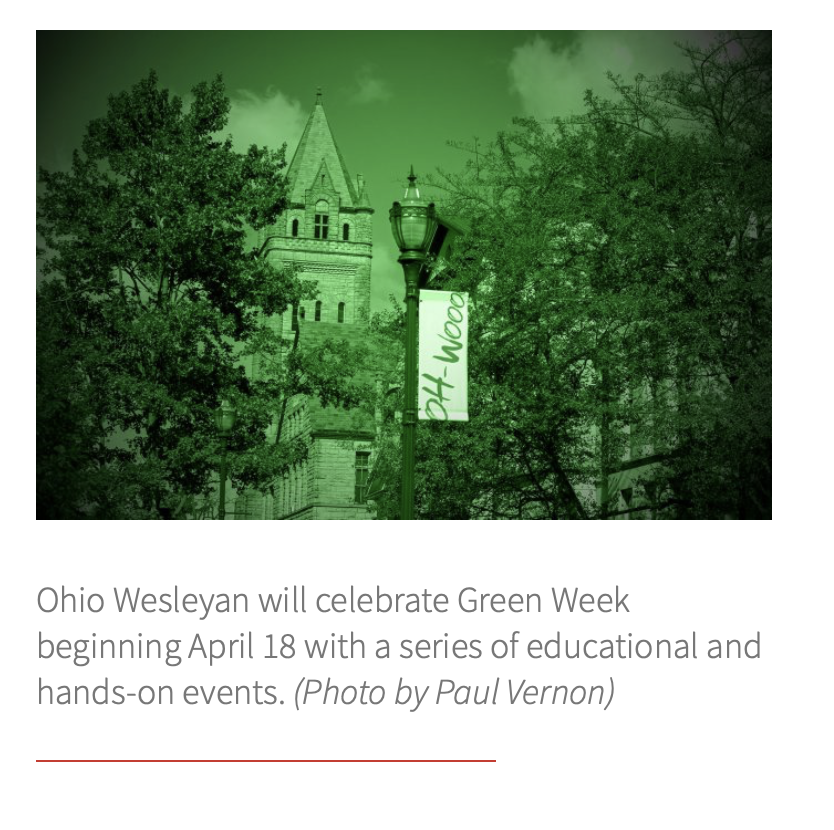 Instead, Environment and Sustainability students, residents of the Tree House small living unit, and others are planning a Green Week that will kick off Monday, April 18, and conclude Tuesday, April 26.
Instead, Environment and Sustainability students, residents of the Tree House small living unit, and others are planning a Green Week that will kick off Monday, April 18, and conclude Tuesday, April 26.
“Yep, Green Week and a half,” said John Krygier, Ph.D., professor of Environment & Sustainability.
Students are planning a calendar of activities that includes information about how to reduce, recycle, and repurpose waste along with lunchtime tabling sessions with long-term environmental partners Del-Co Water Company and the city’s Public Utilities Department to discuss sustainability efforts. Both organizations also will share career and internship information.
The Green Week activities will include an April 23 trash cleanup in collaboration with the Unity Community Center and conclude April 26 with students enrolled in a renewable energy course presenting their research at 10:30 a.m. in the atrium of Schimmel/Conrades Science Center.
Treehouse moderator SK Bulander ’23 of Los Angeles, California, is coordinating this year’s events calendar.
“2040 is the non-negotiable deadline of overhauling our fossil fuel-dependent world before the Earth reaches a global average temperature of 1.5°C and is irreversibly damaged,” said Bulander, an Environmental Science and English (Literature) double major. “In the shadow of such a gargantuan task, it can be terrifying and stressful to even consider the idea of sustainability. My vision for Green Week is that it will give OWU students the tools to make meaningful lifestyle changes that are bite-sized.”
“Look for activities like ‘Plant-based Problem Solving,’ where students can learn about everyday low-waste and plant-based swaps, and ‘Bee-less Wax Wraps,’ which will instruct on how to make vegan wax wraps as an alternative to plastic wrap, plastic bags, tin foil, plastic lids, and many other single-use items. Make sure to donate old clothes to the pop-up campus trade store and pick up some new, re-used fits,” Bulander continued.
“Meanwhile, Green Week will provide students with a space to analyze the corporate forces driving the climate crisis,” she said. “This includes events like ‘An Introduction to Textiles,’ wherein students will learn about the environmental impacts of the textile industry, and ‘The Root of it: How Community Gardens in the U.S. Combat Food Insecurity,’ at which students can participate in a discussion panel with local community gardens and OWU professors on food insecurity at both the national and local level.
I hope that it will be apparent that there are numerous on-campus and nearby groups pushing for environmental action,” Bulander concluded. “Students looking to get more involved in the environmental side of OWU should join the Sustainability Task Force for monthly meetings that bring together the university’s administrators, faculty, staff, and students for updates on OWU’s environmental movements. It provides a great space for networking for careers in sustainability and acts as an excellent starting point for becoming more involved in clubs. I would also recommend they try out Citizens’ Climate Lobby (CCL) to advocate for local, bipartisan carbon emission-cutting legislation, especially in our extremely divisive political landscape today.”
On Earth Day (April 22), the group will launch this year’s May Move Out initiative, which urges students to donate usable clothing, books, furniture, household goods, and other items as they clear out their rooms at the end of the semester. Begun in 2012, the decade-old program typically recovers 10 tons of material annually that otherwise would go to a landfill.
Large, temporary storage pods will be set up to collect donations in parking lots at the Chi Phi fraternity on Williams Drive and at the Bradford Milligan, Smith, Stuyvesant, and Welch residence halls. Items will be accepted from 7 a.m. to 7 p.m. during the collection period and then donated to Goodwill. For more information and a list of acceptable items and donation dates, visit maymoveout.owu.edu.
May Move Out coordinator Graham Steed ’23 of Marion, Ohio, said he hopes students take the time to sort and donate all of their recyclables.
“Each item they dispose of has great impact on the well-being of our ecosystem and society,” said Steed, an Environmental Studies major. “Not only does each piece of trash travel great distances to landfills within our country or others, which produces large amounts of CO2, but also once they get there, they pollute the local community from toxic runoff. These communities are most often poor and communities of color, which further adds an intersectional aspect to this issue.”
In addition to Green Week and May Move Out, Ohio Wesleyan students this semester also are relaunching an initiative to share unused dining hall food with the community. Ohio Wesleyan is a member of the national Food Recovery Network.
Students Abby Charlton ’25 of Newark, Ohio, and Savannah Domenech ’25 of Webster, New York, are overseeing this renewed effort, which includes collecting unused food once a week.
Domenech, an Environmental Studies and Geography double major, said of a recent collection, “we got over 30 pounds of food consisting of buffalo chicken, beef brisket, steamed rice, and mixed vegetables. However, in the past, the club has gotten over a hundred pounds of food for one recovery. After we weigh the food, we cart it over to Grace Clinic across the street, and they distribute it to their patients.”
Another initiative restored this semester is the use of a storm net to collect debris from the Delaware Run, which flows through the north side of campus on its way to the Olentangy River. The 13,000-pound, 4-foot-high, 18.5-foot-wide, concrete-weighted storm net structure was installed into the Delaware Run in 2019, prior to the pandemic.
Students Logan Honchul ’24 of Trenton, Ohio, and AJ Lashway ’23 of Niskayuna, New York, began working with the City of Delaware’s Department of Public Utilities this semester to restore the net, monitor it, and analyze the items collected.
“I’m hoping to get more experience in water-quality testing, since my background in that aspect is more limited,” said Lashway, a Zoology, Environmental Science, and Creative Writing triple major. “It’s such an important part of understanding the health of bodies of water, so I’m excited to get better at properly analyzing the collected data. It will also be a great experience to be able potentially make changes based on the information we gather.”
Honchul said she also is interested in learning and honing skills to support her career goal of working in wildlife conservation.
“As a Zoology major, I have a strong passion for animals, and working with them in any capacity excites me,” said Honchul, who is double majoring in Environmental Science and minoring in Communications. “I hope I am able to help improve the local wildlife habitat. I hope to learn about how much litter and debris really affect local water life.”
Learn more about Ohio Wesleyan’s Department of Environment and Sustainability at owu.edu/environment.
A very cool project, planned and developed since 2012, is funded and ready to build. It has been delayed over and over, and frikkin’ COVID has slowed it down, but the plan is to start construction before the end of August (2021).
Watch for updates here: but for now, the proposal and details are below.
Proposal: OWU Chimney Swift Tower
Ohio Wesleyan University
Spring 2021
Dick Tuttle (’73), Caitlyn Buzza (’12), Alex Johnson (’15), Ashley Tims (’17), Dustin Reichard (Zoology), John Krygier (E&S, Geography)
Contact: John Krygier (jbkrygier@owu.edu)
Summary
The purpose of the Chimney Swift Tower project is to provide a safe area for resting and nesting of chimney swifts. Chimney swifts consume a significant number of mosquitos and thus reduce student’s exposure to mosquito-borne illnesses. The tower will also serve as an important point of interest on the residential side of campus, an attraction for both prospective students and those already on campus. As a student-driven project in collaboration with OWU alumni, the tower serves as a notable example of theory-into-practice and the OWU Connection.
Chimney swifts evolved to live in dead, hollow, tree trunks and adapted to chimneys over time. Chimneys are increasingly rare in new buildings and often closed off in older buildings. Thus humans created a habitat for these birds, and are now removing that human-constructed habitat. In response to this problem, artificial chimney swift towers have been constructed over the last few decades. OWU Alumni Dick Tuttle has spent years documenting the many chimney swifts in Delaware, and his experience suggests that a swift tower on OWU’s campus, near Stuyvesant Hall, would be a prime location for the birds. We have visited the site with Peter Schantz who sees no practical problems with the proposed location. Tuttle has tentatively agreed to fund the construction of the tower with a gift to OWU. The typical tower, about 5’ x 5’ and 20’ to 30’ tall, can accommodate around 100 birds. The swift tower will attract student attention: swifts entering the tower at dusk are an impressive sight. For students (and prospective students) pursuing biology, environmental science, and environmental studies the towers will be of much interest. Importantly, for the typical student (or prospective student) the towers will be an intriguing addition to OWU’s campus, signaling OWU’s commitment to the environment while promoting interest in the natural world. The tower, which will have information about chimney swifts and the function of the tower, will serve as an important point of interest on the residential side of campus.
Key Components
Planning for the tower is and will continue to be a collaboration between students, faculty, and alumni. Plans have been developed over several years by students (Caitlyn Buzza ’12, Alex Johnson ’16, and Ashley Tims ’17) working in collaboration with OWU Alumni Dick Tuttle (’73) and faculty members Dustin Reichard (Zoology, ornithology), John Krygier (Geography & Environmental Studies, sustainability), and Kristina Bogdanov (Art, ceramics). Tuttle, Reichard, Bogdanov, and Krygier will work with mason John Kuhn on design details and construction of the tower.
1. The tower will meet the standards set by Paul D. Kyle in his book Chimney Swift Towers: New Habitat for America’s Mysterious Birds, A Construction Guide (Texas A&M University Press, 2005). These guidelines have been used for many successful towers. John Kuhn, our contractor, is an experienced mason who has also taught masonry courses. He should be able to integrate OWU students in the building project if appropriate.
2. Chimney swifts are of immense value to their immediate environment: they are disinterested in humans and are neither aggressive nor dangerous. They consume an immense amount of flying insects, including mosquitos. Thus they serve an important public health role. A functioning chimney swift tower will significantly reduce the number of mosquitos on campus (as they will most likely fly back and forth from the tower to the Olentangy River).
3. The tower will be located to the north-east of Stuyvesant Hall, near the top of the hill that slopes down to William St. This is a good location for the chimney swifts (high, open) but also for observing birds from the residential halls, the newly renovated terrace in front of Stuyvesant Hall, and William St. Peter Schantz has recommended this location. (see below)
Map of location for proposed chimney swift tower.
4. The tower will serve specific courses on campus, and associated faculty and students. In particular, Dr. Dustin Reichard and his ZOOL 341: Ornithology course. See Dr. Reichard’s letter of support. (See Appendix 1).
5. The tower project is representative of student theory-into-practice projects on and around campus, focused on environment and sustainability. For prospective students, the project provides a tangible example of theory-into-practice and campus/community collaboration. The tower project serves as an example of and inspiration for the kind of projects students in the Environment and Sustainability Program (Environmental Studies and Environmental Science) have undertaken in courses such as John Krygier’s GEOG 360: Environmental Geography and GEOG 499: Sustainability Practicum, as well as independent studies and SIP funded projects.
6. The tower will be attractive, fitting into the aesthetic of OWU’s campus while serving as a landmark and destination for students (and prospective students). The preliminary proposal includes brick construction with stone accents using recycled bricks and stone from campus, to match the materials used in Stuyvesant Hall. (see below)
Draft design of proposed chimney swift tower (access hatch, left, tile inserts, right)
7. The tower will also be tastefully distinctive, with Ohio Wesleyan-themed ceramic artwork near the base. Dr. Kristina Bogdanov (Art, ceramics) has agreed to assist with removable (or permanent) panels at the base of the tower. The primary medium will be tiles, created from recycled clay and dyes. Building on a project started by former OWU biology and art major Ashley Tims (’17), Bogdanov and students will create tiles with permanent images, such as historical OWU photographs (see below). In addition, tiles will be created that depict the leaves of local, native trees and plants, common birds and animals, insects, bees, and other natural features of the campus area. These OWU inspired tiles can be changed out or added to over time. The tiles can be used in activities by admissions (with prospective students) as well as part of orientation for new students, as a way of relating the history and environment of our campus. We also propose a mosaic tile description of the tower, chimney swifts, and illustrations of how the towers work. Thus un-guided visitors can learn what the tower is about and how it works.
Photograph transfer tiles for base of proposed chimney swift tower.
Appendix 1: Letter of faculty support from Dr. Dustin Reichard (Zoology) & Dr. John Krygier (Geology & Geography, Environment & Sustainability)
To: OWU University Advancement & Administration
From: Dustin Reichard (Zoology), John Krygier (ENVS, Geography)
Re: Chimney Swift Tower on OWU Campus
We are writing to convey our strong support for the installation of a chimney swift tower on the OWU campus. Chimney swifts are migratory songbirds that spend their summers breeding in eastern North America and their winters in western South America. Over the past few decades, chimney swifts have been experiencing a steady decline in population size. A major cause of their decline has been the loss of nesting and roosting habitat as homeowners have transitioned away from brick chimneys and either capped or removed chimneys that are no longer in use. The installation of chimney swift towers is one method for mitigating this decline. Delaware is the summer home of a sizable population of breeding chimney swifts that have been monitored for many years by Dick Tuttle, a committed conservationist from the local community that has offered a generous gift in support of this project.
The addition of a chimney swift tower to the OWU campus will provide numerous benefits to the campus community with relatively limited investment from OWU faculty and staff. From a pedagogical perspective, the tower will provide ample opportunities for students to collect and analyze data of swift roosting, migration, and breeding biology. These opportunities will be utilized by students in Ornithology (ZOOL 341), which is taught every spring, and Organisms and Their Environment (BIOL 122), which is taught every semester. Many of our zoology students are interested in careers related to conservation, and the accessibility of a swift tower on campus would allow them to develop skills in population monitoring while working with an at-risk species.
Additionally, chimney swifts are aerial insectivores that will contribute to the management of aerial insects, such as mosquitoes, which are a nuisance and can carry disease. This issue is particularly relevant given the recent expansion of the Zika virus to the southern United States, and the increased likelihood of more tropical parasites in the future as a result of climate change. The swifts also undertake a tremendous migration to the tropics each winter, which makes the bird an excellent international ambassador as OWU seeks to attract a larger number of international students. Finally, observing the birds enter the tower each evening to roost is an amazing natural spectacle that will undoubtedly thrill members of the community for years to come.
This proposal for chimney swift towers grew out of efforts to enhance habitats for birds, insects, and animals on and around the OWU campus. Work on this project over the past year or two has entailed determining viable locations for the tower, generating plans and designs, all done in consultation with Buildings and Grounds (for advice and input). Additional related campus projects include birdhouses, bat houses, and bee hotels. The development of such habitats on campus is one component of our proposed campus sustainability plan.
Please contact us with any additional questions, and let us know how we can proceed on this important opportunity.
Dustin Reichard
John Krygier
DELAWARE, Oh. – Several community members, leaders, schools and groups received recognition at the annual Keep Delaware County Beautiful Awards that occurred on Dec. 4 at Stratford Ecological Center.
The Litter Prevention Award recognized Ohio Wesleyan University student Brianna Graber who coordinated with the City of Delaware on a project to install a storm drain net in Delaware Run on the OWU Campus. The 6-and-a-half ton device is the first of its kind installed in the United States and collects trash and organic debris. The collected waste will be analyzed and the water quality will be monitored giving the community a better picture of the health of our water resources.
More on the storm drain net:
Students and faculty have been working a project to implement a storm drain net in the Delaware Run on campus. The purpose of the net will be to remove trash and green waste/debris from the Delaware Run behind Merrick on campus.
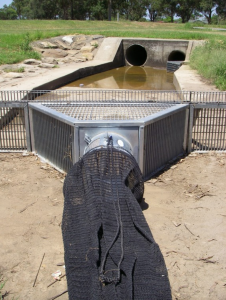 Beginning in the Fall of 2018, Janelle Valdinger, Dr. John Krygier and I (Brianna Graber) have been cohesively working a project to implement a storm drain net in the Delaware Run, on OWU’s campus. The purpose of this project will be for Summer Science Research through Ohio Wesleyan University and for an internship with the City of Delaware. The purpose of the net will be to remove trash and green waste/debris from the Delaware Run behind Merrick on campus.
Beginning in the Fall of 2018, Janelle Valdinger, Dr. John Krygier and I (Brianna Graber) have been cohesively working a project to implement a storm drain net in the Delaware Run, on OWU’s campus. The purpose of this project will be for Summer Science Research through Ohio Wesleyan University and for an internship with the City of Delaware. The purpose of the net will be to remove trash and green waste/debris from the Delaware Run behind Merrick on campus.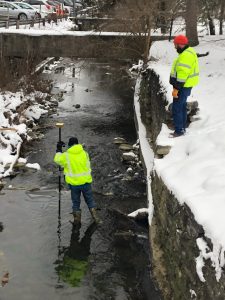
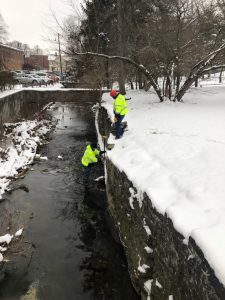
DELAWARE, Ohio – Ohio Wesleyan University student Janelle Valdinger is one of fewer than 20 undergraduate and graduate students across the country invited to participate in January in the first national Workshop on Community Geography.

DELAWARE, Ohio – Ohio Wesleyan University student Janelle Valdinger is one of fewer than 20 undergraduate and graduate students across the country invited to participate in January in the first national Workshop on Community Geography.
Valdinger, an OWU geography major, has been named a Community Geography Fellow and awarded funds to attend the two-day conference Jan. 25-26 at Georgia State University in Atlanta. According to organizers, the National Science Foundation-supported workshop will bring together 40 to 50 Community Geography Fellows, who are “academic researchers and community leaders interested in using geographic research for community development, social justice, and environmental sustainability.”
In addition to being a full-time Ohio Wesleyan student, Valdinger also is a full-time employee of the City of Delaware, where she works as a Geographic Information System (GIS) technician.
She said her main goals for the workshop include “learning new ways to use geographic research for community development, especially in other countries … and finding new ways to build a stronger, long-lasting working relationship between Ohio Wesleyan University and the City of Delaware.”
Valdinger already has helped to coordinate a joint university-city project to install three water-purifying rain gardens on OWU’s campus. She is helping now to implement a collaborative relationship that involves the city’s Department of Public Utilities hosting OWU students as interns and “developing a partnership with the OWU Summer Science Research Program where the city hires a student-intern for the summer and the university provides housing, along with faculty guidance for a research project.”
The first Ohio Wesleyan student to hold the summer research internship is junior zoology major Brianna Graber. Graber is working with the city this semester on a project to fund and install storm-drain nets to catch large waste items and prevent them from entering the Olentangy River.
While attending the Georgia conference, Valdinger will present information on the developing OWU-Delaware partnership, which currently includes eight university students working on environmental projects.
In addition, she hopes to glean information to assist with her Ohio Wesleyan departmental honors project, which focuses on mapping public utilities in Belize.
On campus, she is collaborating on the honors project with Department of Geology and Geography faculty members John Krygier, Ph.D., director of environmental studies; Nathan Amador Rowley, Ph.D.; and Ashley Allen, Ph.D., and with Jay Scheffel, assistant director of physical plant. Off campus, Valdinger is working with 2003 OWU alumnus Tim Hawthorne, Ph.D., assistant professor of GIS at the University of Central Florida.
“Not only will we be mapping utilities, but we will be providing utility locators to the local government officials in Belize,” Valdinger said. “Citizen Science will play a large role in this project, and learning (at the workshop) about what avenues other professionals have taken will help greatly in the execution of my project.”
Krygier, who was also named a Community Geography Fellow, said he is excited for Valdinger to attend the workshop and share her OWU accomplishments with scholars from across the country, and to learn how to further community engagement on campus, in Delaware, and abroad.
He also is excited by the overall potential of community geography, one of his research specialties, and its focus on engaged community work.
“It’s about creating a win-win situation for colleges and their communities,” Krygier said, “with positive impacts, research experiences, and real-world engagement between people and institutions who share many common goals.”
Learn more about the upcoming national Workshop on Community Geography at www.communitymappinglab.org/commgeog19.html and more about OWU’s geography major at www.owu.edu/geography or https://sustainability.owu.edu.
For the Spring of 2018, Dr. Amador-Rowley and Dr. Allen along with student Janelle Valdinger have organized a “group independent study” course focused on creating better maps for areas of rural Tanzania through a non-profit organization called Crowd2Map.
For the Spring of 2018, Dr. Amador-Rowley and Dr. Allen along with student Janelle Valdinger have organized a “group independent study” course focused on creating better maps for areas of rural Tanzania through a non-profit organization called Crowd2Map.
No experience necessary!
You can take the class either Tuesday (Dr. Amador-Rowley) or Thursday (Dr. Allen) afternoon.
Space is limited!
Contact Dr. Rowley (nsamador@owu.edu) or Dr. Allen (alallen@owu.edu) ASAP.
Probably best if you fill out a Change-of-Schedule Form from the Registrar’s site and use that to enroll in the class.
Independent Study Description: Students will help create better maps of rural Tanzania, particularly those areas where girls are at risk of Female Genital Mutilation. Students will liaise with volunteers in Tanzania and worldwide. Adding roads and buildings from satellite images into OpenStreetMap will allow activists to better protect girls at risk of FGM and allow better delivery and monitoring of services, as well as improved navigation. After training, students will also give feedback to new mappers and assist with validation. They will liaise with community mappers on the ground and also create village level printable maps using QGIS. We will work with small communities that do not typically show up on maps. The open-source map developed in this independent study effort will be open to everyone and help better planning of services. No previous mapping experience necessary!!
It took us more than a year but we now are able to offer an ACTV (Activity Course) with sustainability content. This started as a student initiative.
For the spring of 2018, this course will be offered during the first and second module for .25 credit. Thus the course is a great add-on to your normal class load.
Please sign up for the class, and urge others to do so. We can offer additional topics (organic gardening, repair, etc.) in the future if this one flies.
The instructor is Aleks Ilik: he is an OWU grad and happens to be married to Kristina Bogdanov (Art). Aleks runs the Blue House Worm Farm in town and is currently working with students Matt Burke and Peyton Hardesty on a worm composting table at MTSO. One goal for the course is to expand this effort to OWU’s campus.
Chris Fink of HHK is listed as the instructor, but that is only because Aleks is not yet in the OWU system.
Meetings are scheduled Wednesday, noon-1 and Friday 2:10-4pm. Location TBA.
The Activity course will expand this effort, working with AVI and other folks to reduce waste on campus.
Please let us know if you have any questions!
Rain barrels have become increasingly popular. As a community, we can increase this popularity by making them more visually appealing. Businesses, organizations, and individuals have the opportunity to fund a rain barrel with an installation kit for $34. The cost includes sanding, washing, and priming each barrel before it is given for painting.
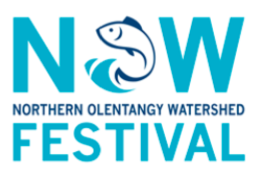 Since 2014, the City of Delaware has organized the Northern Olentangy Watershed (NOW) Festival that highlights our local, water resources. This summer, the 5th annual NOW Festival will take place on June 16th at Mingo Park (500 E. Lincoln Ave. Delaware, OH) from 12-3 p.m. As part of the festival, the annual rain barrel raffle will occur. Rain barrels provide many stormwater benefits including:
Since 2014, the City of Delaware has organized the Northern Olentangy Watershed (NOW) Festival that highlights our local, water resources. This summer, the 5th annual NOW Festival will take place on June 16th at Mingo Park (500 E. Lincoln Ave. Delaware, OH) from 12-3 p.m. As part of the festival, the annual rain barrel raffle will occur. Rain barrels provide many stormwater benefits including:
 Rain barrels have become increasingly popular. As a community, we can increase this popularity by making them more visually appealing. Businesses, organizations, and individuals have the opportunity to fund a rain barrel with an installation kit for $34. The cost includes sanding, washing, and priming each barrel before it is given for painting. The barrels can be both sponsored and painted by the same entity, or a request can be made for a local art class to paint it. These barrels will be raffled off at the NOW Festival on June 16th at Mingo Park and proceeds will go to help support the Upper Olentangy River Watershed.
Rain barrels have become increasingly popular. As a community, we can increase this popularity by making them more visually appealing. Businesses, organizations, and individuals have the opportunity to fund a rain barrel with an installation kit for $34. The cost includes sanding, washing, and priming each barrel before it is given for painting. The barrels can be both sponsored and painted by the same entity, or a request can be made for a local art class to paint it. These barrels will be raffled off at the NOW Festival on June 16th at Mingo Park and proceeds will go to help support the Upper Olentangy River Watershed.
See form, below.
Payment must accompany the sponsorship requests. All rain barrel request forms must be received by Friday, April 13th by 4 p.m. The purchase of the rain barrel and kit is non-refundable.
Checks can be made out to “City of Delaware, Public Utilities” and mailed to:
City of Delaware Caroline Cicerchi, Watershed Coordinator 225 Cherry Street Delaware, Ohio 43015
There are a limited number of barrels available for this opportunity. Once that limit has been obtained or the deadline for ordering has been reached the barrels will be distributed to the appropriate painters. Local art programs in the community, including local schools, have been contacted about painting some of these barrels. If you are interested in utilizing one of these programs, please indicate so on the order form. There may be a limit to these programs, so each request will be accommodated on a first-come basis. You will be notified by email once the supplies are available for pickup or delivery. It is expected that the rain barrels will start to be delivered or available for pick up starting Monday, April 2nd as requests are received.
If you are painting the barrel yourself, please use outdoor acrylic paint (same paint that is bought for painting the outside of houses, outdoor fencing, etc.). The rain barrels will need to be decorated by May 31st. Once decorated, you can put them on display at your business either inside or outside leading up to the Northern Olentangy Watershed (NOW) Festival or, if preferred, they can be dropped off at the Wastewater Treatment Plant Facility for the City to put them on display.
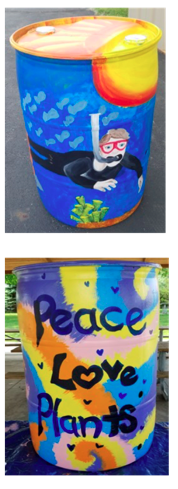 All painted barrels will need to be delivered to the City of Delaware’s Wastewater Treatment Plant Facility (225 Cherry St., Delaware, OH) before 4:00 p.m. on Wednesday, June 13th.
All painted barrels will need to be delivered to the City of Delaware’s Wastewater Treatment Plant Facility (225 Cherry St., Delaware, OH) before 4:00 p.m. on Wednesday, June 13th.
Please consider participating in this fun event! The festival will be held at Mingo Park (500 E. Lincoln Ave., Delaware, Ohio) on June 16th from 12:00-3:00 p.m. Raffle ticket sales will begin at 12 p.m. and end at 2:30 p.m. with the winning ticket to be drawn shortly after.
Please contact Caroline Cicerchi, Watershed & Sustainability Coordinator, with any questions at 740-203-1905 or ccicerchi@delawareohio.net.
